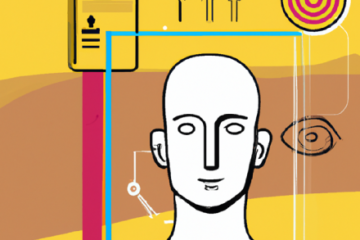Decoding Customer Centricity To Drive Digital Transformation
Decoding Customer Centricity To Drive Digital Transformation

Does the term ‘Customer Centricity’ sound Greek and Latin to you? Let’s catch you up to speed!
We live in a world today where we must adapt to the rapid advancements in technology in order to ensure relevance and longevity. Digital transformation is not just about re-imaging your company, it is a dire necessity. It is vital to be in sync with the changes occurring in technology, culture and operations. This enables the reinvention of enterprises through radical changes in processes and strategies. The objective here is to achieve digital business optimization and to build customer-centric organisations.
Customer-centricity is the key driver to digital transformation. Organisations must develop and follow customer-centric values in order to adapt to the changes in technology and remain profitable. It is essential to ensure that organisations provide good (if not best) customer experiences and collects feedback throughout the customer journey. This helps in implementing the right business strategies to exponentially increase revenues. At LitmusWorld we understand the importance of CX and provide the best solutions by delivering actionable insights across touchpoints.
Let’s try to understand the fundamentals of what makes an organisation customer-centric. Here are 7 cultural traits of a customer-centric organisation:
1. Listening to your Customers

Customers are constantly telling us stories about their experience, even without literally saying anything. Customers experience emotions throughout their journey with a brand and are increasingly vocal about their perception of these brands, especially through social media. We can capture these experiences through a combined social media, web and app analytics-driven approach.
It is important to capture key emotions and key moments across the customer journey to collect insights and additional customer data for future interactions.
2. Adapting to Changing Consumer Behaviour
Rapid changes in technology have led to consequent changes in consumer behaviour. It is essential to adapt to changes in consumer behaviour to develop a customer-centric enterprise. Customers must be given an effective self-service platform so that they can voice their opinions resulting in increased engagement. Organisations can leverage modern cost-effective mediums to collect feedback and not stick to traditional pen and paper methods. This will make the
process more agile and help in re-evaluating the collected data when needed.
3. Great CX Begins at Home

For organisations to become customer-oriented, they must go beyond just customer feedback and collect insights from within the organisations. Employees are key customer-centricity drivers as they have first-hand insights on the actual customer experience. They have a better understanding of the product, the processes that support it, and the people at the top.
Employees must go beyond managerial approval to use their discretion and deliver outstanding customer services to ensure a delightful CX. Therefore, a feedback loop with the frontline, customers and managerial hurdles can help omit issues with ease and deliver quick solutions.
4. Closing the Feedback Loop
The next step is to close the loop. An appropriate response to the collected feedback is mandatory in order to ensure customer satisfaction. The essential reason to validate customer feedback is to make your customers believe that their voices are not falling on deaf ears. There must be a continuous engagement between the brand and the customer through omni-channel strategies. Every customer issue should be resolved through immediate real-time action. This
helps in developing a strong customer relationship which aids in strong brand development and higher customer loyalty – the basic premise of a service-profit chain.
5. Respecting Customer Privacy

For organisations to maintain customer security they need to ensure that adequate privacy policies are in place. Customers expect organisations to use the information they’ve shared, with a discreet and a non-spammy intent. It is essential to build proper safeguards to provide maximum transparency.
Consent should be taken from the customers to be contacted for purposes other than the underlying intent. Organisations must also build context in every conversation through the integration of systems and channels to increase relevance. This paves the path to the customer-centric route to success.
6. Creating Accountability for CX Improvement
Ownership of the customer needs to be inculcated as a culture, right from the top management to the frontline staff. A compelling vision should be established and implemented across the organisation, which may even involve realigning the roles. Organisations must create accountability and apply unified CX metrics across the organisation, with real-time tracking to ensure accountability. This leads to the agile development of solutions. Customers receive a quicker response which eventually builds stronger customer relationships.
7. Thinking Through Journeys, Not Touchpoints
In conclusion, for organisations to follow a customer-centric approach, they must take into account the entire customer journey from a real-life lens. It is essential to understand the different customer emotions at different stages of the journey. With the increase in digital adoption, customer journeys have become increasingly complex with multiple touchpoint interactions. Thus, organisations must facilitate cross-departmental communications through integrated CEM solutions and ensure thorough engagement from the top to the bottom of the organisational structure. Cross collaboration aids in achieving the goal of being customer-centric through digital transformations.
Digital transformation is about figuring out business strategies before you invest in technologies!
Digital transformation should be guided by the broader business strategy, and not by the usability of technology to address the current business challenges. This means an outside-in approach is less favourable over an inside-out approach. As a CIO, you have more knowledge and understanding of the gaps in the current system as compared to an outside consultant. The systems you bring in place will be more robust and future-proof with reduced costs and greater ROI. After all change management is a multi-billion dollar industry for a reason. The reason being lack of internal intervention. Take charge, evolve!
To help you assess the readiness of your CX initiatives, experts at LitmusWorld and The Positivity Company have carefully designed a CX Maturity Assessment. This will help you understand where you currently are and where you want to be through our CX Maturity Roadmap guide.
Take the CX Maturity Assessment

